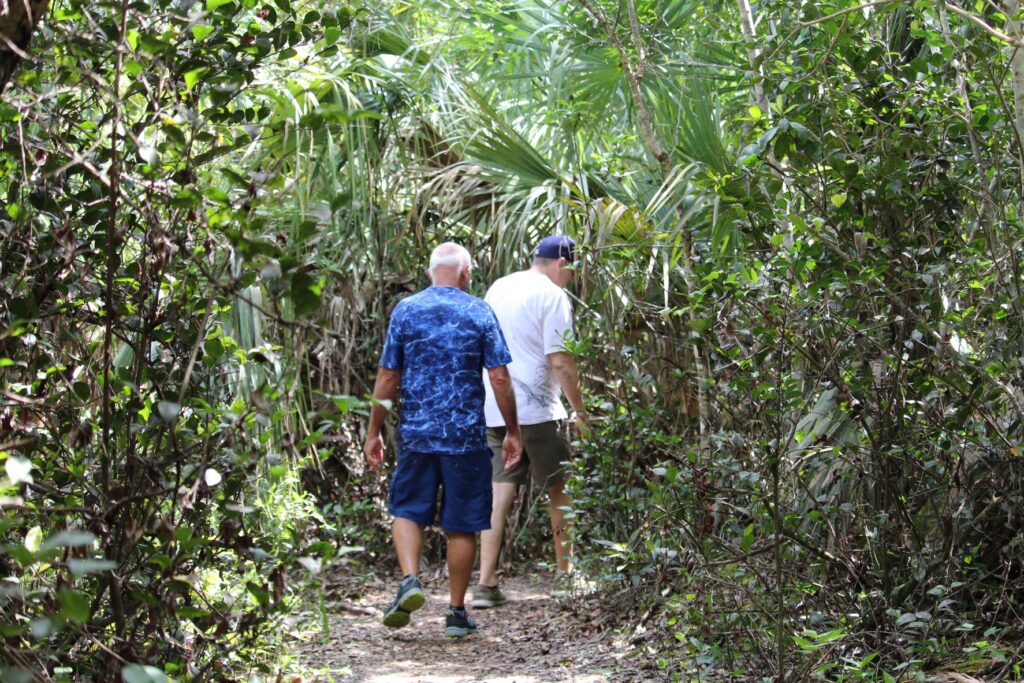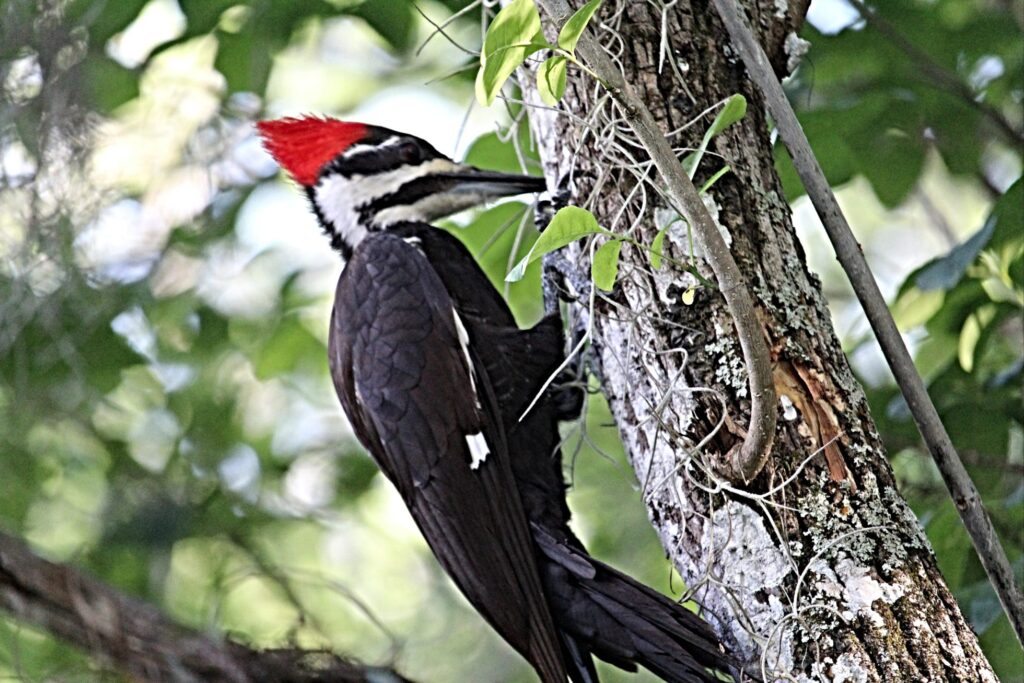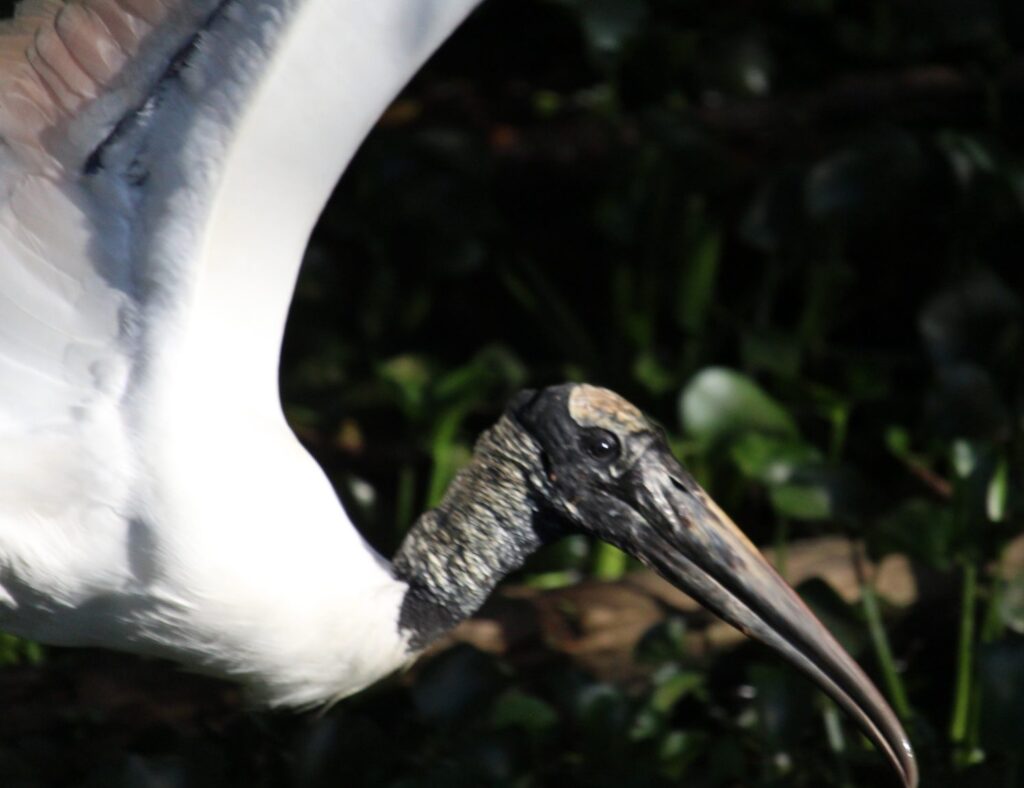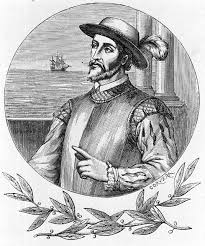We recently spent the weekend in the middle of the Everglades. After setting up camp at the Midway Campground, we hopped in the car and began our exploration of the “Loop Road” (County Road 94) which stretches for 24 miles beginning at Monroe Station and ending when it eventually joins US 41 (about a 15 minute drive from the campsite). We started our journey at the southern (eastern) end of the trail and drove north (west) to Monroe Station. The first eight miles were paved, but after that, we were traveling on a well-maintained dirt road.

As usual, I had to learn about the history of this out of the way road that I had passed many times traveling back and forth from the Keys. It turns out that the Loop Road was the brainchild of James Franklin Jaudon, a successful Miami developer who dreamed of an east-west highway through the Glades. Jaudon spent several years working on the Tamiami Trail from Miami. In 1921 his company broke ground on what was originally named Chevelier Road (later named Loop Road).
Jaudon had big plans for developing this area. He founded the town of Pinecrest which he pitched as the ‘next Miami’ offering residential housing, a school, and a community center. Unfortunately, these plans never materialized as Jaudon ran out of money by 1923. Enter Barron Collier who offered to provide the money to complete the trail. There was only one condition: the state would agree to create a new county named after him (Collier). The state took him up on his offer and created Collier County out of the southern part of Lee County.

Collier had a grapefruit enterprise about twenty miles west of the road that Jaudon was proposing. A year later, Collier successfully convinced the state to reroute the Tamiami Trail to its current path though his newly formed county. Since he was providing the finances, the state agreed to relocate the trail, which effectively bypassed Jaundon’s original road killing any hopes of developing Pinecrest into the next Miami.
Despite this setback, by the 1930s, the Pinecrest community did develop as a logging town with about 200 residents at its peak. The town had a sawmill, a public school, a general store, a gas station, a cooking shack, and some bunk houses. The growth, however, slowed down and, in 1937, Jaudon’s company filed for bankruptcy. The 207,000 acres that the company owned was sold to the Federal Government and would later become part of Everglades National Park.

Even after the government purchased the land on which Pinecrest was developed, the town continued to exist in one form or another. According to Jeff Klington writing for the Tampa Bay Times, one of Florida’s “roughest taverns” was located at the Gator Hook Lodge in Pinecrest. For over twenty years hunters, fishermen, froggers, moonshiners, and gator poachers frequented this tavern in the middle of the Glades.
Although Miami Beach was only an hour away, in the Glades, the Gator Hook was a place where law and order were absent. Even though the Gator Hook was located close to the Miami-Dade County line, it was a part of Monroe County where the nearest law enforcement was almost 100 miles away in Key Largo.
The Gator Hook Tavern was started by Eley Jack Knight in 1958 and it became a local hangout for the Gladesmen until 1974 when the government declared the Big Cypress a national preserve. Although the environmentalists were thrilled that the land would now be protected from development, the Gladesmen knew that their life in the swamp would never be the same. In 1977 the Gator Hook closed and the abandoned old bar burned down.

Perhaps due to its seclusion, Loop Road has inspired other rumors and tall tales. One that is often written about is the rumor that Al Capone owned a speakeasy and gambling establishment in Pinecrest during the prohibition. Today, there is nothing left of Pinecrest save for a few homes built along the road. It is almost impossible to find the site of the Gator Hook or any other remains of Pinecrest. Instead, the road runs deep into the Glades offering travelers a chance to see Florida wildlife up close and personal.
The road runs through the Big Cypress Swamp, and alligators can be seen sunbathing on the banks of the canals that drain into the swamp. We also saw all kinds of wading birds like the wood stork, great blue herons, and cormorants. We walked through one of the marked nature trails and saw the Cypress knees and huge trees that were so carelessly cut down during the logging of the area. The entire trip on the loop road took about two hours. The road was better than we expected with few potholes or bumpy areas. This was during the dry season, so we were not bothered by mud or too many bugs.

On our way back to the campground, we stopped at the Kirby Storter Roadside Park located in Ochopee. Kirby Storter was part of a pioneering family in the area. He worked as a carpenter and electrician for Barron Collier and oversaw the construction of the Tamiami Trail. The park has a boardwalk that takes you a half mile into the swamp to view a mature cypress strand without having to trudge through the swamp itself. The boardwalk ends at a gator hole where we saw all kinds of animals including gators, birds, turtles, and even a red headed woodpecker.

After leaving the Storter area, we decided to check out two other campgrounds that we had wondered about on our travels across 41. Monument Lake Campground and Burns Lake Campground offer picnic day use areas, vault toilets, and camping sites for tents and RVS. Although both campgrounds provide lake views, they are not set up for campers who are used to such amenities as electric, water, or sewer. Fresh water is available by the rest rooms in the Monument Lake Campground, but there is no fresh water at the Burns Lake Campground. When we entered the Burns Lake Campground, the camp hosts informed us that they were waiting on the wildlife officers to come and remove a gator from one of the sites. Sure enough, when we passed the campsites, we saw a large gator lying in the sun relaxing next to a camper.
We returned to our campsite at Midway Campground which was more to our liking as the sites were away from the lake, the sites had electric, real toilets, and plenty of shade. Although there were no sewer or water hook up, we filled our water tank at the campground before we set up camp and we were good to go.
All in all, it was a very interesting weekend exploring the Big Cypress National Preserve. Next trip, we will check out some of the other sites including Fakahatchee Strand Preserve State Park and Janes Memorial Scenic Drive. Stay tuned.



